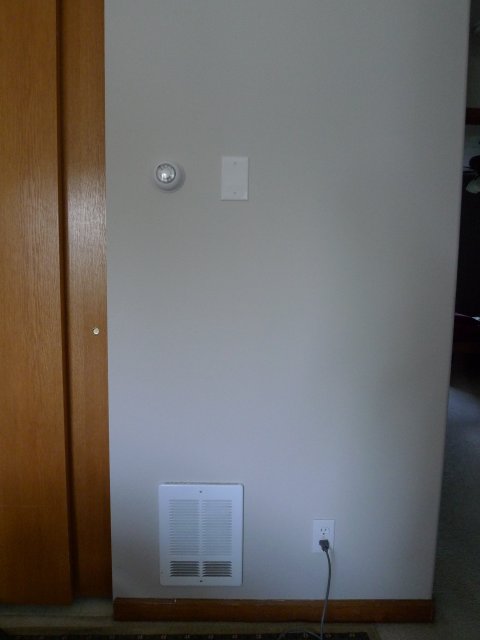Converting a Line Voltage Thermostat to Low Voltage
Published at 13:04 on 8 September 2020


Thermostats come in two basic kinds: line voltage, for control of electric heaters, and low voltage, for everything else.
I have electric heat, so my condo naturally came with line voltage thermostats. That has allowed me, over the past heating season, to be reminded that line voltage thermostats generally suck, for two basic reasons:
- There is not as much a market for them, so their makers basically don’t care very much about quality and accuracy. If you have electric heating, you probably have line voltage thermostat, and you are stuck with the limited selection of generally lousy options. Sucks to be you.
- Electric heaters draw a lot of current, and that tends to make line voltage thermostats heat up after they close. A thermostat that heats up will tend to open and cut the heat off before the room has reached the set point. How much, depends on the wattage of the heater and how much heat loss there is (i.e. how cold a day it is).
You might think that a line voltage thermostat rated at 22A could easily switch 14.6A of current (which is what the 3500W of heating in my main living space draws) without appreciably heating up, but revisit Point No. 1 above. Neither the one that my unit came with, nor the one I replaced it with, could properly do that.
It was so bad I had to crank the thermostat all the way up to its 90°F setting just to prevent the heat from cutting off prematurely on frosty cold mornings. Once I left fairly early and that day I ended up wasting energy and money heating my home summer-hot for a few hours because I forgot I had turned the heat all the way up. So the status quo was not just annoying, but wasteful as well.
Naïvely replacing a line voltage thermostat with a low voltage one will lead to failure at best and catastrophe (i.e. a fire) at worst. Thankfully, there are combination transformer/relay devices like this which enable one to use a low-voltage thermostat to control electric heating.
I had done that at a previous home where this issue plagued me, but there I had the benefit of a crawlspace with a large electrical box to bolt the thermostat relay onto. Not so here. Initially, I gave up, because the electrical box the existing thermostat was mounted on was too small for me to bolt the relay onto, and I didn’t want to replace it with a double-gang box, because that would make for a large, ugly double-gang cover plate.
Then I realized that the thermostat and one of the heaters shared the same inter-joist wall space, meaning it was possible to remove the 12/2 cable running from the box to the heater, replace it with 12/3, mount the relay on a spare knockout on the heater enclosure, and use the extra wire to feed the switched current back to the box (where I could then connect it to the other heater).
Of course, with existing construction, nothing is ever as simple as it seems. In this case, there was a staple on the old cable which at first prevented me from removing it, resulting in my lying on my back, sticking my arm most of the way up into the inter-joist space, and probing around blind with a pry bar until I could locate and remove the pesky staple. Then there was the unexpected structural member inside the wall. I could only assume it was load-bearing, so as much as it would have simplified my life to cut a notch out of it, that was an absolute no-no, and the resulting extra bit of fiddliness caused by the unexpectedly tight clearances easily added another hour to the project.
No matter; it’s done now.
P.S. Yes, I used a simple, mechanical thermostat, not a fancy computerized one with lots of setbacks. Why? Two main reasons: 1) I don’t work a regular schedule, so don’t really have any sort of regular thermostat program that makes sense, and 2) I prefer to keep it easy, simple, and un-computerized; complicated systems tend to be unreliable and unpredictable systems.
